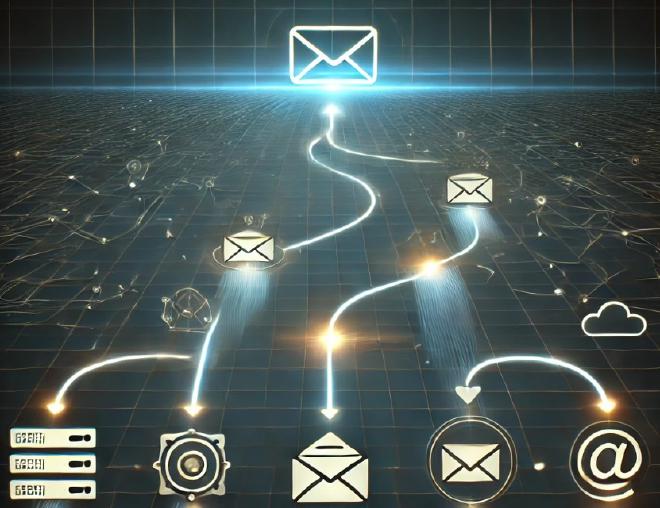
Email originated in the 1960s but truly took off in the 1990s. While the concept of electronic messaging has been around for decades, the protocols that support email communication started to emerge in the 1970s.
Today, sending an email involves a series of steps and technologies that guarantee it reaches its destination safely.
In this post, we’ll examine how email operates, the different protocols involved, and how it has evolved from simple text to include rich, multimedia content. SMTP#
Used for Creating a message that gets on to the network to be sent to other email servers. It is a transport protocol, responsible for transferring message from one server to another.
- It leverages TCP session on port 25.
POP3 and IMAP are used to retrieve the messages. {{Message Delivery Agent (MDA) Server doesn’t sends the email to the client, the client has to retrieve it from the server = it’s called pull}}
Process#
💻 When we write an email, we write it on the Email Client (eg. Outlook, Gmail, Yahoo etc) | Hit Send, the email client communicates to the email service provider’s SMTP server (which acts as Message Transfer Agent - MTA, to relay/ route the message) | Email belongs to the same provider? It gets transferred to Message Delivery Agent (MDA ie. responsible to store the email and deliver when requested by the user’s email client) Different provider? It is transferred to the other provider’s SMTP server using [[101 - Technical#44.What is DNS? fold| DNS]]
| On MDA (which is another SMTP server), the message is stored on a specific location, user’s mailbox. The MDA has to be the recipient’s mail server | When clients requests for new emails sent to them, it is retrieved by client using POP3 or IMAP
The process of sending Email is analogous to the traditional mail system. To send mail to the other person, we need to know the address (username@domain name). The email is first sent to the nearest post office (MTA) and then that post office transfers the mail to other post offices, until it reaches to it’s destination office (MDA). The recepient may inquire if any letters are under his name, and the post officer (IMAP/ POP3) delivers the mail to you.
Emails supports un-encrypted or plain text messages (Originally it only supported plain text)
As you know the emails travels through many servers before reaching its destination, these are vulnerable to be read by third person.
However, emails can be encrypted before sending, so even if it moves through the same servers, no one can read it, except for recepients device which has the key.
In the early days email, only supported ASCII character encoding (used 7 bits per character), but they didn’t supported text formatting like bold, italics and of course images.
In 1990s came the MIME (Multipurpose Internet Mail Extensions) which supported complex formatting and attachments.
Email now supports HTML messages, which enables them to rich formats and visually appealing design as necessary.
Emails are like postal mail. It has an envelope and the message.
Format of email
| Envelop:: | |
|---|---|
| Mail From: | abc@xyz.com |
| RCPT To: | guy@comp.com |
| Header:: | |
| From: | abc Corp |
| To: | guy at Comp |
| Date: | 23/01/2024 |
| Subject: | Notice of changes |
| Body:: | |
| Hi, these are the changes… thank you. |

